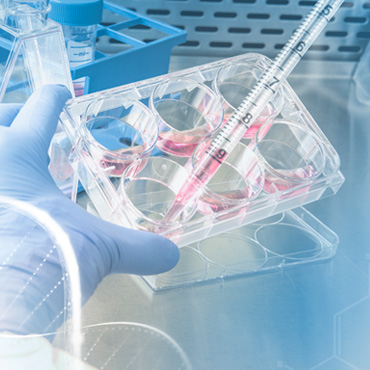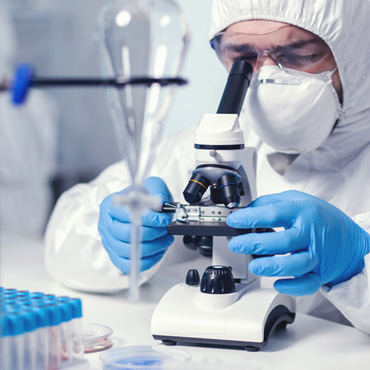Stem Cell Treatments for Heart Disease
Stem cell treatments and therapies are being explored and used internationally in an effort to treat heart disease throughout Latin America, Europe & Japan. Heart disease is a broad term that encompasses various conditions affecting the heart, such as coronary artery disease, heart failure, and myocardial infarction (heart attack). Stem cell therapies for heart disease aim to promote tissue repair, improve heart function, and potentially regenerate damaged heart tissue. Stem cell treatments for cardiovascular diseases are an area of active research and clinical investigation. These treatments aim to repair and regenerate damaged heart tissue, improve cardiac function, and potentially restore normal heart function. Here are some key aspects of stem cell treatment for cardiovascular diseases:1) Types of Stem Cells Treating Cardiovascular Disease:
Several types of stem cells have been studied for cardiovascular disease treatment, including:Mesenchymal stem cells (MSCs): These adult stem cells can be derived from various sources such as bone marrow, adipose tissue, and umbilical cord tissue. MSCs have shown potential in promoting tissue repair, reducing inflammation, and stimulating blood vessel formation.
Cardiac progenitor cells: These are specialized stem cells that have the ability to differentiate into various cell types found in the heart. They are being investigated for their potential to regenerate damaged heart muscle.
Induced pluripotent stem cells (iPSCs): These are reprogrammed adult cells that can be differentiated into various cell types, including heart cells. iPSCs hold promise for personalized therapies and disease modeling.
2) Delivery Methods:
Stem cells can be delivered to the heart using different techniques, including:Intravenous infusion: Stem cells are injected into the bloodstream, and it is believed that they migrate to the damaged heart tissue.
Intracoronary infusion: Stem cells are delivered directly into the coronary arteries supplying the heart.
Intramyocardial injection: Stem cells are injected directly into the heart muscle using a catheter or during open-heart surgery.
3) Mechanisms of Action:
Stem cell therapies for cardiovascular diseases may work through multiple mechanisms, including:Differentiation: Stem cells can differentiate into various cell types, potentially replacing damaged or dead heart muscle cells.
Paracrine effects: Stem cells release growth factors, cytokines, and other signaling molecules that can promote tissue repair, reduce inflammation, and stimulate blood vessel formation.
Immune modulation: Stem cells can modulate the immune response, potentially reducing inflammation and promoting healing.
Integration and remodeling: In some cases, stem cells may integrate into the existing heart tissue and contribute to the remodeling of the damaged area.
Congestive Heart Failure (CHF)
Congestive heart failure (CHF) is a condition in which the heart is unable to pump blood effectively, leading to a buildup of fluid in the lungs and other parts of the body. Stem cell therapy has shown promise as a potential treatment for CHF by promoting the regeneration of damaged heart tissue and improving heart function.The process of using stem cells for CHF typically involves the following steps:
1) Harvesting stem cells:
Stem cells can be harvested from a variety of sources, including bone marrow, adipose tissue, and umbilical cord blood. The stem cells are then isolated and prepared for transplantation.2) Delivery of stem cells:
Stem cells can be delivered to the heart using a variety of methods, including intracoronary injection, intramyocardial injection, or intravenous infusion. In intracoronary injection, the stem cells are injected directly into the coronary arteries that supply blood to the heart. In intramyocardial injection, the stem cells are injected directly into the heart muscle. In intravenous infusion, the stem cells are delivered through the bloodstream.3) Regeneration of heart tissue:
Once the stem cells are delivered to the heart, they can promote the regeneration of damaged heart tissue by differentiating into new heart cells and stimulating the growth of new blood vessels. This can help to improve heart function and reduce the symptoms of CHF..4) Monitoring and follow-up:
After stem cell transplantation, the patient is monitored for any adverse effects and for improvements in heart function. Follow-up visits may be necessary to track the patient's progress and make any necessary adjustments to their treatment plan. Stem cell therapy shows promise as a potential treatment for CHF, more research is needed to determine the safety and effectiveness of the therapy. Additionally, there are still many questions about the optimal type of stem cells to use, the best delivery methods, and the long-term effects of stem cell therapy for CHF. Patients with CHF should talk to their healthcare provider about all available treatment options to determine the best course of action for their individual case.Furthermore, stem cell therapy is a minimally invasive procedure with a relatively short recovery time with low risk of complications compared to other forms of treatment.
Cost and Availability of Stem Cell Therapy
The costs and availability of stem cell therapy can vary significantly depending on several factors, including the type of stem cell therapy, the country or region where the treatment is sought, the specific medical condition being treated, and the healthcare provider or clinic offering the therapy.For more specific price details View Prices
And for detailed info on procedure READ MORE ABOUT TREATMENT PROTOCOLS HERE.



